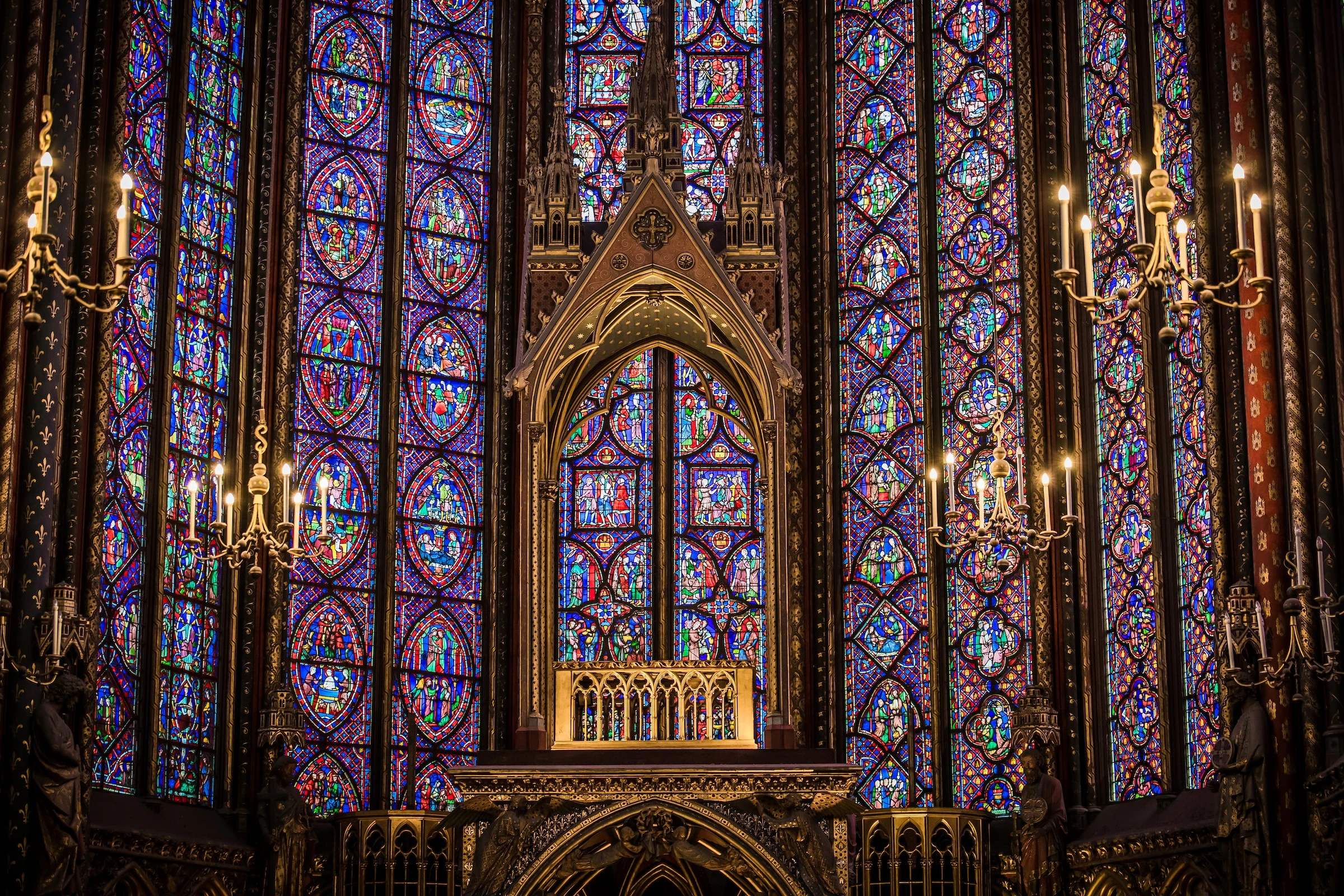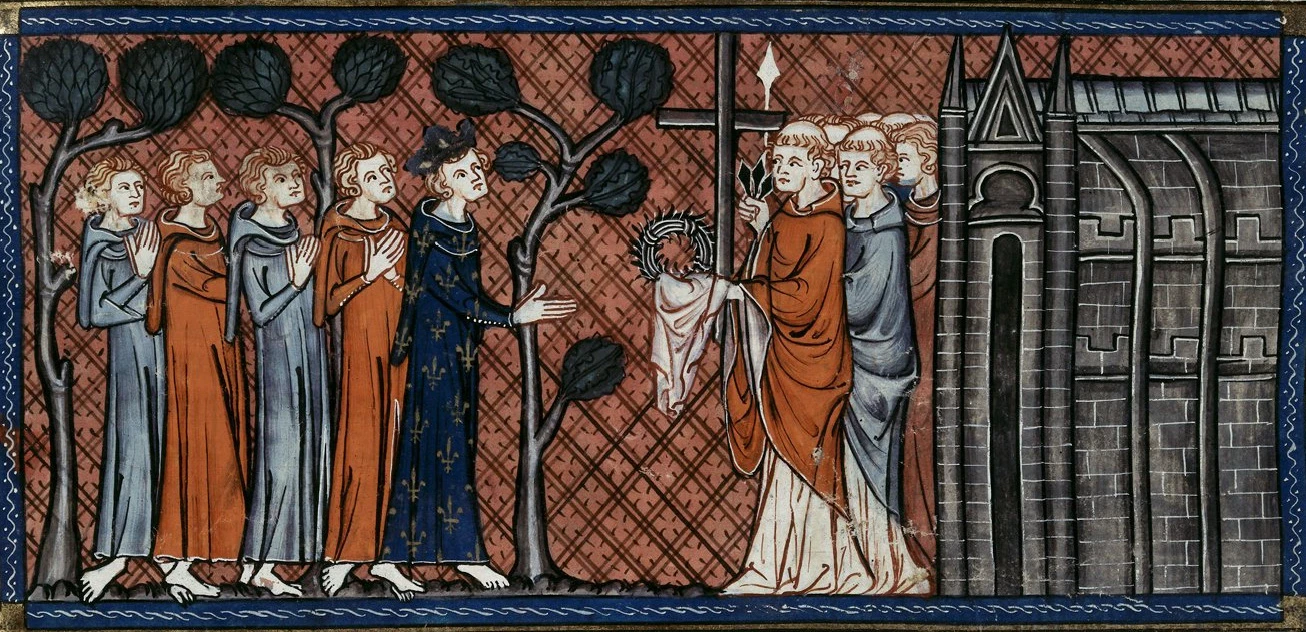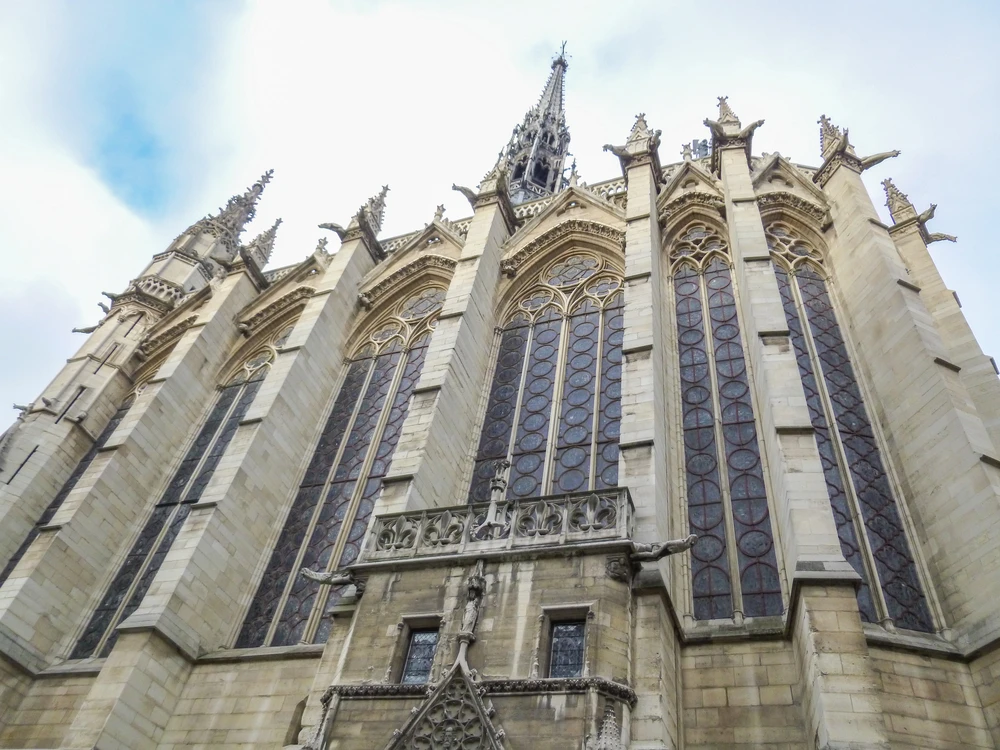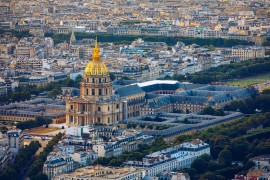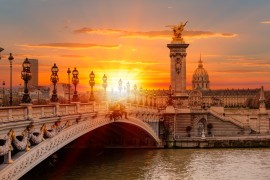Why visit the Sainte-Chapelle in Paris?
First, enter the lower chapel, with its vaulted ceiling decorated with floral motifs, before taking the narrow staircase leading to the upper chapel. There, 670 m² of stained glass windows create a heavenly spectacle. Each window tells a story: from the Book of Genesis to the Apocalypse, in light that changes throughout the day. 💡 Don't miss the western rose window and its flamboyant decor, a 15th-century masterpiece.
Photo tips and best time to visit
Light is key. Come around 10 a.m. in the morning or in the late afternoon to admire the red and blue reflections on the pillars. In winter, the low angle of the sun further accentuates the contrasts. Climb up near the rose window for a spectacular effect. And if you can, book a combined visit with the Conciergerie next door: the view of the Sainte-Chapelle from the courtyard is superb.
The former reliquary of the Sainte-Chapelle. Photo selected by monsieurdefrance.com: Stephanie LeBlanc on Unsplash.
The Sainte-Chapelle in figures and history
Like all old monuments, the Sainte Chapelle knows that anything is possible. Since Saint Louis ordered its construction in 1241, and it was completed just seven years later, the Sainte Chapelle has seen many good times and many misfortunes. Witness to the prayers and family celebrations of medieval kings, it has also suffered several fires, flooding, and vandalism during the French Revolution, but it is still standing, connecting the craftsmen of the Middle Ages and those of the 19th century, who followed in the footsteps of their predecessors to preserve its unique and magnificent style.
The Sainte Chapelle in figures
The Sainte Chapelle has 670 square meters of stained glass windows. Photo selected by Monsieurdefrance.com: depositphotos.com
It is important to talk about numbers because they reflect the architectural prowess of this monument, which will be 800 years old in a few years. It consists of 15 stained glass windows. They are 15 meters high in the nave and 13 meters high in the choir. There are 1,113 scenes from the Old and New Testaments: representing a total of 670 square meters of stained glass, excluding the 13th-century rose window depicting the Apocalypse. The lower chapel is decorated with numerous columns crowned with 140 capitals, which are often adorned with sculptures of flora and fauna (grapes, birds, etc.). Although it does not appear to be as high because Notre Dame is so close by, the spire is 75 meters high.
With over 1,000,000 visitors per year, the Sainte Chapelle is the 15th most visited monument in Paris.
A brief history
In 1239, Saint Louis (1226–1270) acquired the most renowned relics in Christendom. Namely: the Holy Crown, which was placed on Christ's head by the soldiers at the time of the flagellation; several pieces of the True Cross (the one on which Christ was nailed); the Holy Blood; the Holy Sponge (which was used to offer Christ a little vinegar to drink), and the Holy Lance. The sum paid by the king was literally astronomical, representing half of his annual income. He welcomed the relics, which had arrived from Constantinople via Venice, at Sens Cathedral and brought them to Paris, where they were housed in the small chapel of Saint Nicolas. To house this spiritual treasure, Saint Louis decided to build a chapel in his palace on the Île de la Cité. It was erected in just seven years, which was incredible at the time. It was opened in 1248. It was shaped like a reliquary and, at the time, housed a huge reliquary made of silver and gilded copper (which was melted down during the Revolution). The king accessed it from the ground floor, allowing him to pray in peace, while the public accessed it from above and at a distance. It was a palatine chapel, meaning it was the personal chapel of the king, his family, and the palace staff. The priests reported directly to Rome and not to the bishop of Paris. Royal weddings and baptisms were celebrated there in the Middle Ages. Then the kings left the Palais de la Cité (for the Louvre, then Versailles) and the Sainte Chapelle became "just" the chapel of the Palais de la Cité, which became the courthouse.
Saint Louis received the relics in Sens before placing them nine years later in the brand new Sainte Chapelle. Illustration chosen by monsieurdefrance.com: British Library via Wikipedia.
Victim of several fires, the Sainte Chapelle has been renovated several times and its spire has been rebuilt four times in its history. For a long time, it was renowned for the quality of the music performed during services and was equipped with a magnificent organ on which the famous Marc Antoine CHARPENTIER (1643-1704) worked in the 17th century. In the 18th century, it fell into obscurity, even though it was filled with worshippers on Good Friday when the relics of the Passion of Christ were displayed. It became a simple parish church and was deconsecrated in 1791. The relics were scattered (some were never found), while the pieces of the Cross and the Crown of Thorns were given to Notre Dame de Paris, where they have remained ever since, except during the renovation of Notre Dame after the fire in 2019. Thus, in 1791, a long period of decline began. The 12 statues of the 12 apostles were mutilated and scattered. The spire was destroyed and became the headquarters of a revolutionary club before becoming an archive for the courthouse.
The interior of the Sainte Chapelle. Image by ian kelsall from Pixabay
It was the 19th century that saved the Sainte Chapelle. When plans were made to demolish it to build a brand new courthouse, a few people rallied together and, thanks to the success of Victor Hugo's "Notre Dame de Paris" and the rediscovery of the Middle Ages and Gothic style, the Sainte Chapelle (which is mentioned in Victor Hugo's book) was saved in 1836. The craftsmen and architects of the time remained modest and attempted to restore rather than imagine, as Viollet le Duc would later do for Notre Dame. A painted decoration was restored that had almost disappeared, with only a few traces remaining, the stained glass windows were recreated (except for a few, including the 16th-century rose window). The statues were remade. The portal is rebuilt, inspired by old drawings of the Sainte Chapelle. A new spire rises 75 meters above the ground. The monument is saved. It has survived to the present day and is cared for by the Centre des Musées Nationaux.
The exterior of Sainte Chapelle. Photo selected by monsieurdefrance.com: scritman via depositphotos.
Pourquoi ce lieu est important pour les Français.
Pour les Français, la Sainte-Chapelle n’est pas seulement un monument : c’est une part de leur âme collective.
Construite par un roi devenu saint, elle symbolise l’union entre la foi, la lumière et la monarchie, au cœur du Moyen Âge.
C’est ici que la France médiévale a marié le pouvoir du sacré et la beauté de l’art.
Quand la lumière traverse ces vitraux vieux de 800 ans, elle relie encore le Paris d’aujourd’hui à celui des rois capétiens.
Chaque visite est un hommage discret à la spiritualité et au génie artistique français.
The Sainte Chapelle: practical information
By car or on foot:
The address: 10 Boulevard du Palais, 75001 Paris.
Parking: Harlay Pont Neuf parking garage (Quai des Orfèvres) or Indigo Lutèce-Cité parking garage (1 Rue Lépine).
By subway:
Station Cité (line 4). The stations Cluny – La Sorbonne (line 10) and Châtelet (lines 1, 7, 11, and 14) are less than a 15-minute walk away.
An R.E.R.
Saint Michel / Notre Dame station, line C.
A Bus
bus: lines 21, 24, 27, 38, 58, 81, 85, 96
The timetable
From April 1 to September 30 9 a.m. to 7 p.m.
From October 1 to March 31 9 a.m. to 5 p.m.
PLEASE NOTE : last admission to the monument is 30 minutes before closing time.
Closed on January 1, May 1, and December 25
2025 rates
Individual rate: €19
Except Wednesdays, individual rate: €13
- Combined ticket for Sainte-Chapelle and Conciergerie: €25
Except Wednesdays, individual rate: €20
From October 1, 2025, to March 31, 2026
- Individual rate: €13
- Combined ticket for Sainte-Chapelle and Conciergerie: €20
The website
The Sainte Chapelle is managed by the Centre des Monuments Nationaux.
FAQ Visiting the Sainte-Chapelle in Paris
What should you definitely see at Sainte-Chapelle?
The monumental stained glass windows in the upper chapel are the highlight of the visit: 670 m² tell the story of the Bible in color.
Why was the Sainte-Chapelle built?
Saint Louis had it built in the 13th century to house the relics of the Passion of Christ, notably the Crown of Thorns.
When is the best time to admire the stained glass windows?
Between 10 a.m. and 12 p.m. or in the late afternoon, when the sun shines directly on the windows.
Can photos be taken inside?
Yes, without flash, to preserve the stained glass windows. Tripods are not permitted.
How much does admission cost and how long does the visit take?
Tickets cost around €13. Allow 45 minutes to see everything at a leisurely pace.
Is the tour suitable for families?
Yes, children love the colors! There are also guided tours for families.
Note that you are right next to Notre Dame Cathedral and Paris City Hall.

